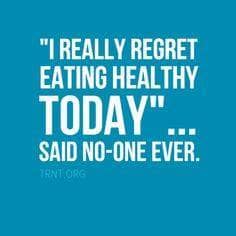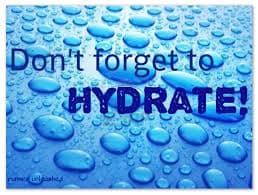
I always say don’t let weather or nutrition get in the way of your performance. I have let that happen more then I care to admit in the past 28 years of racing. It can be tricky to manage your race day nutrition because other factors, what you can carry, what you can take on the course, how much you eat and drink the days leading up to the race, can impact what and how much you eat and drink race day.
Nutrition is an important component of how well you will train and perform in your sport. Even if you are not competitive, it is important to consider your nutrition needs both before and after your workout. Don’t let hungry or lack or nutrition keep you from your workout.
What works for me may not work for you and my experience helped me create my plan. I am fortunate that I can handle solid and liquid calories. What those calories are composed of changes in each race or training year.
Below are some basic guidelines I share with the athletes I coach. I am not a Registered Dietitian so often refer them to a local RD if they want to get a more personalized plan.
Prior to exercise, here are some important tips to keep in mind to properly fuel:
- Consume a snack fairly high in carbohydrates to ensure adequate muscle stores. Fruits, cereals, whole grain bread.
- Include a small amount of protein to aid in muscle repair. Protein sources (meats, legumes, nut butter) is not easily digestible so keep it small
- Avoid foods high in fat (butter, oils) or fiber (vegetables, beans), to aid in digestion and avoid gastric distress.
Some examples of my pre-exercise food choices with a protein/focused on higher complex carbohydrate, a small amount of fruit and veggie combination are:
- hummus with pita small amount of carrots and broccoli
- Amy’s Burrito
- peanut butter on bagel or sandwich bread or banana or apple
- nuts and fruit mix
Examples of my post-training protein/carbohydrate meal.
- Make sure to ingest a snack or meal with carbohydrate and protein within 15-60 minutes following an intense workout.
- Including protein will help to aid in repairing muscle damage and will provide the building blocks for stimulating the growth of new muscle tissue.
- You WILL be more hungry following a workout. To avoid overeating and negating the calories you burned during exercise, try to include high fiber foods in your post-exercise meal.
Here are some ideas of my post-exercise meal choices:
- Shakeology with almond milk, banana, and peanut butter
- Whole-wheat pita or bagel filled with veggies, tofu or another plant-based protein source
- Whole grain Rice or Quinoa with plant-based protein and veggies
- Lentil, sweet potato chili
Below are some tips of what I eat the days leading up to an endurance event based on common nutritional issues I and others have experienced during an Ironman and 70.3 are
- Bonking, “hitting the wall” not sustaining their intensity during the last part of the race.
- Increased temperatures or humidity then what you trained in causing dehydration can limit performance.
- Gastrointestinal problems such as stomach cramps, bloating, etc. can have a negative impact on your performance.
I limit high fiber foods, veggies 48 hours prior to my event and increase my complex carbohydrate intake. Carbohydrate is my main fuel for an event. Your body stores contain roughly 500 grams of carbohydrate (this is 2000 kcal), not enough to make it to the finish line. In theory, it should be enough to get most athletes through the first 3 hours of the race.
Best to start fueling early, the first 30 minutes of the bike to make sure you avoid carbohydrate depletion. I know from experience as well as the research, once you run out of carbohydrate stores it is difficult to recover.
As a general rule, aim for about 200 calories (50 grams) per hour as a starting point. Common sources of easily digestible carbohydrate to consume while racing includes bars, gels, chews, and drinks (Gatorade). What you use is a matter of personal preferences. Of course, the best way to determine it is in training. I find that race intensity makes it more difficult to chew solids. I also like “eating” so combine bars, gels, real food, and liquid calories. I like options!

- 1 bars + water and each 1/2 bar / 30 minutes drinking 20-30 ounces of water within the hour
- 2 gels + water
- 1 get + bottle of energy drink + water
- a dozen or so mini Pretzels/chips w/water
I have had much success drinking about 30 ounces or 1.5 -2 bottles of liquid per hour. Most events have aid stations every 10 miles so you don’t need to carry that much during the event. Drink to thirst is a recommendation that works fine for other athletes. Again, it is best to try in training and create a plan for race day. I like to be hydrated and “loaded” before race day so I am very mindful of my hydration and choosing carbohydrate-rich foods 72 hours learning up to the main event.
My general 70.3/140.6 Nutrition Plan
On the bike, I drink 1.5-2 bottles/hour, 1 water (20 ounces) and about 1 bottle of Gatorade. plus about 100-150 solid/gel calories on the bike. On the run, I sip a cup of Gatorade and water at every aid station. For Ironman, I start consuming pretzels at mile 5 cause the race is longer.
What do you struggle with nutritional while triathlon?
Please reach out to me with questions, comments or concerns, wendy@t2coaching.com